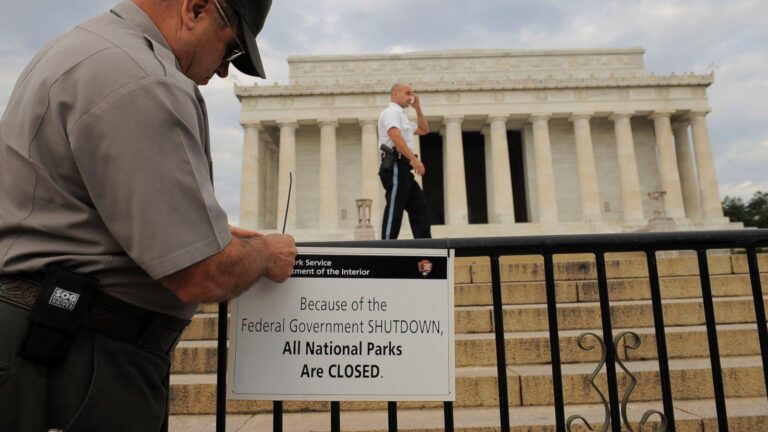Understanding the Impact of a Government Shutdown: What Closes and What Remains Open
As the threat of a federal government shutdown becomes increasingly imminent, millions of Americans are preparing for the disruptions it may cause. From the closure of national landmarks to interruptions in federal services, shutdowns affect a broad spectrum of government functions and everyday life. This article explores which agencies and programs are most vulnerable during a shutdown, the consequences for federal employees, and practical advice for navigating this challenging period. Gaining insight into these dynamics is essential as the deadline for budget approval approaches and uncertainty over federal funding intensifies.
Which Federal Agencies and Services Are Most Affected?
When Congress fails to pass a budget or continuing resolution, many government departments face either partial or complete shutdowns. While critical operationsŌĆösuch as those related to national defense, emergency response, and public healthŌĆöcontinue under ŌĆ£exceptedŌĆØ status, numerous other services halt or scale back significantly. For instance, the National Park Service, heavily dependent on discretionary funding, often closes visitor centers and restricts access to monuments and recreational areas. Meanwhile, the Department of Homeland Security maintains essential border security and emergency functions but suspends many administrative tasks.
Several key services experience delays or interruptions that ripple through communities and industries. Consider the following examples:
- Social Security Administration: Regular benefit payments proceed, but new claims and application processing slow down considerably.
- Internal Revenue Service (IRS): Tax refunds and audits are delayed, although taxpayers can still file returns.
- Department of Veterans Affairs: Medical care for veterans generally continues, but some support and outreach programs may be paused.
- Federal Judiciary: Courts operate with reduced staff, causing postponements in hearings and case management.
| Agency | Shutdown Status | Typical Consequence |
|---|---|---|
| National Parks | Closed or Restricted | Visitor access limited or denied |
| Social Security Administration | Limited Operations | Payments continue; new applications delayed |
| IRS | Reduced Capacity | Refunds and audits postponed |
| Veterans Affairs | Partial Operation | Medical services open; some programs paused |
Impact on Federal Workforce and Essential Government Functions
A government shutdown creates immediate uncertainty for federal employees. Thousands face furloughs, while others classified as essential continue working without pay until funding is restored. Essential personnel include military members, law enforcement officers, and emergency responders who maintain critical national security and public safety functions. Conversely, many administrative and support staff, such as park rangers and clerical workers, are sent home without paychecks during the shutdown.
This division leads to uneven government operations. For example, while Social Security offices may still process benefits, the intake of new applications slows. Federal grant-funded schools, museums, and cultural institutions often close, impacting local economies and tourism. The strain on essential workers, who must manage increased workloads without immediate compensation, adds to the challenges during these periods.
| Employee Category | Status During Shutdown | Examples |
|---|---|---|
| Essential/Exempt | Work without pay | Military personnel, TSA agents, FBI officers |
| Non-essential/Furloughed | Sent home without pay | Administrative staff, park rangers |
| Pay Protected | Paid but limited duties | Social Security employees |
- Critical services related to security and health remain operational.
- Non-essential roles face furloughs, reducing government efficiency.
- Public attractions like national parks and museums typically close.
How Public Assistance Programs Are Disrupted
Shutdowns also affect numerous public assistance programs, causing delays that impact millions of Americans. While core programs such as Social Security, Medicare, and Medicaid continue, the processing of new applications and issuance of some benefits may slow or pause. For example, newly filed claims for unemployment benefits or Supplemental Nutrition Assistance Program (SNAP) assistance often experience temporary backlogs due to funding gaps.
Programs commonly disrupted include:
- National parks and museums closing to visitors
- IRS tax refund delays
- Suspension of new federal grants and loans
- Reduced staffing in agencies managing housing aid and child nutrition programs
| Program | Status During Shutdown | Effect |
|---|---|---|
| Social Security | Payments continue | New applications delayed |
| SNAP | Benefits paid | Application processing paused |
| National Parks | Closed | Visitor access denied |
| IRS | Limited operations | Tax refunds delayed |
Strategies for Managing Federal Services During a Shutdown
Individuals dependent on federal programs should adopt proactive measures to mitigate the impact of a shutdown. Confirm the operational status of critical services such as Social Security, veteransŌĆÖ benefits, and federal healthcare before making plans. Official government websites and reputable news sources provide timely updates on service availability. Additionally, consider alternative arrangements for activities like air travel security checks or visits to national parks, which may be restricted or unavailable.
Helpful tips to navigate a shutdown include:
- Verify program status through official portals before seeking assistance.
- Maintain an emergency savings buffer to cover potential delays in benefit payments.
- Utilize state and local resources as temporary support for health and social services.
- Engage with community organizations that offer guidance and aid during disruptions.
- Monitor news outlets for updates on government reopening and workforce changes.
| Service | Status During Shutdown | Recommendations |
|---|---|---|
| Social Security | Operational | Expect payments; verify online if uncertain |
| National Parks | Closed or Limited Access | Check park websites; consider alternative outdoor activities |
| Veteran Benefits | Operational | Continue filing claims as usual |
| Federal Employee Offices | Closed or Limited | Delay non-urgent visits; use phone or email when possible |
Conclusion: Preparing for the Uncertainty of a Government Shutdown
As the possibility of a government shutdown draws near, understanding which services will be affected is vital for individuals, businesses, and communities. While essential functions related to national security, public safety, and healthcare generally persist, many non-essential operations face temporary suspension. This disruption impacts federal employees, contractors, and citizens who depend on government programs. Staying informed and planning ahead can help mitigate the effects of a shutdown, highlighting the importance of timely legislative action to prevent such interruptions. We will continue to monitor developments and provide updates as the situation evolves.







